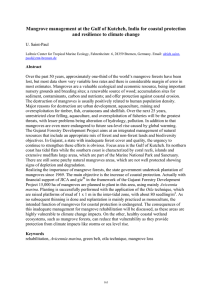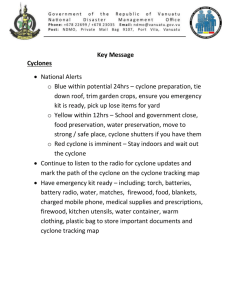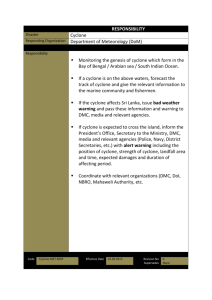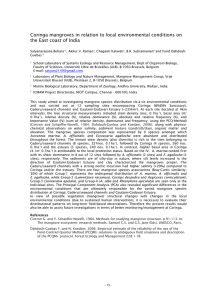Prediction on recovery pathways of the cyclone-disturbed mangroves in the
advertisement
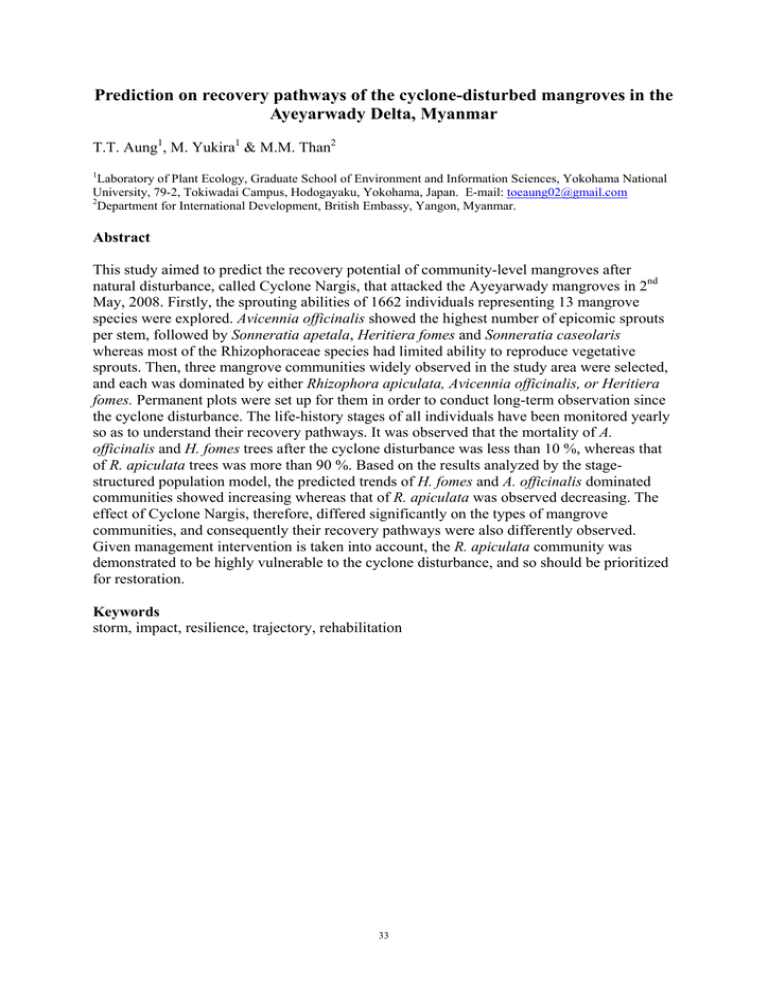
Prediction on recovery pathways of the cyclone-disturbed mangroves in the Ayeyarwady Delta, Myanmar T.T. Aung1, M. Yukira1 & M.M. Than2 1 Laboratory of Plant Ecology, Graduate School of Environment and Information Sciences, Yokohama National University, 79-2, Tokiwadai Campus, Hodogayaku, Yokohama, Japan. E-mail: toeaung02@gmail.com 2 Department for International Development, British Embassy, Yangon, Myanmar. Abstract This study aimed to predict the recovery potential of community-level mangroves after natural disturbance, called Cyclone Nargis, that attacked the Ayeyarwady mangroves in 2nd May, 2008. Firstly, the sprouting abilities of 1662 individuals representing 13 mangrove species were explored. Avicennia officinalis showed the highest number of epicomic sprouts per stem, followed by Sonneratia apetala, Heritiera fomes and Sonneratia caseolaris whereas most of the Rhizophoraceae species had limited ability to reproduce vegetative sprouts. Then, three mangrove communities widely observed in the study area were selected, and each was dominated by either Rhizophora apiculata, Avicennia officinalis, or Heritiera fomes. Permanent plots were set up for them in order to conduct long-term observation since the cyclone disturbance. The life-history stages of all individuals have been monitored yearly so as to understand their recovery pathways. It was observed that the mortality of A. officinalis and H. fomes trees after the cyclone disturbance was less than 10 %, whereas that of R. apiculata trees was more than 90 %. Based on the results analyzed by the stagestructured population model, the predicted trends of H. fomes and A. officinalis dominated communities showed increasing whereas that of R. apiculata was observed decreasing. The effect of Cyclone Nargis, therefore, differed significantly on the types of mangrove communities, and consequently their recovery pathways were also differently observed. Given management intervention is taken into account, the R. apiculata community was demonstrated to be highly vulnerable to the cyclone disturbance, and so should be prioritized for restoration. Keywords storm, impact, resilience, trajectory, rehabilitation 33

